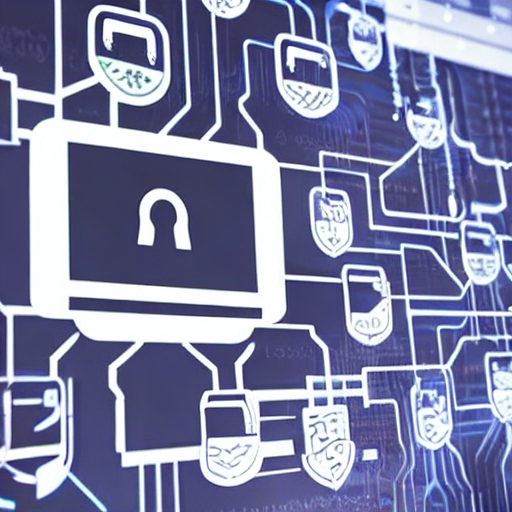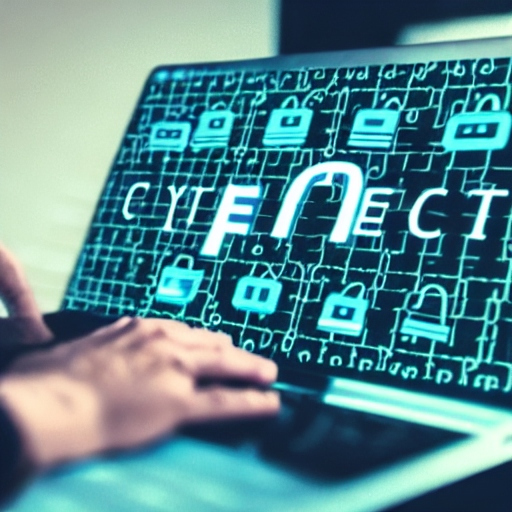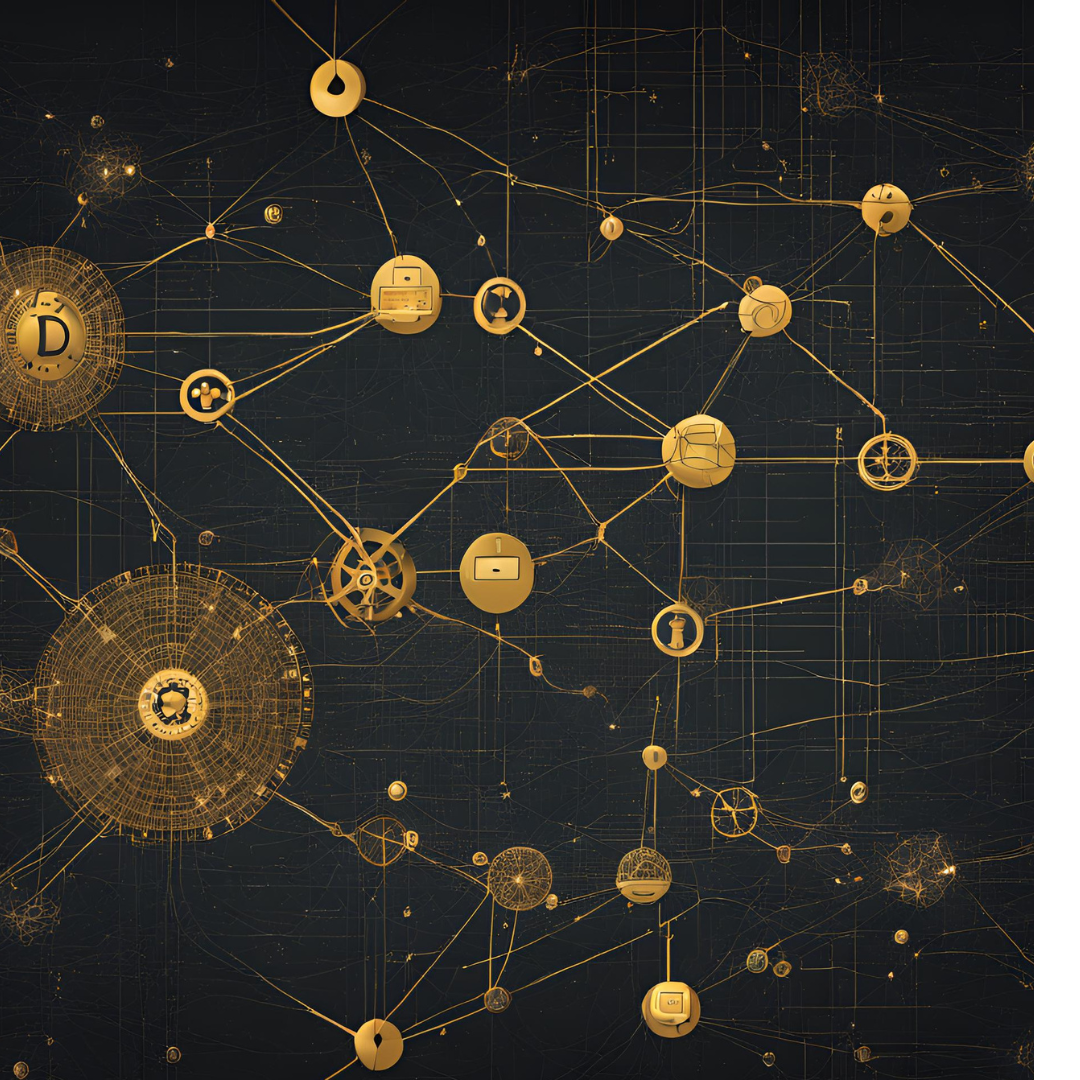What is Cybersecurity?
Cybersecurity is the practice of protecting systems, networks, and data from digital attacks, theft, and damage. It encompasses strategies, techniques, and protocols aimed at defending sensitive information from unauthorized access or cyber threats. In a world where digital infrastructure is integral to nearly all facets of life, cybersecurity has become essential for individuals, companies, and governments alike.
Encryption and Decryption: The Backbone of Cybersecurity
Encryption and decryption are crucial to securing information as it moves across networks. Encryption involves encoding data so only authorized parties can understand it. This process uses algorithms to scramble information, making it unreadable without a decryption key. Decryption is the opposite process—unscrambling encrypted information so it’s accessible in its original form.
There are two main types of encryption:
- Symmetric Encryption: Uses a single key for both encryption and decryption, requiring both parties to share the same secret key.
- Asymmetric Encryption: Uses two keys—a public key for encryption and a private key for decryption. Only the private key holder can decrypt the information.
Ethical Hacking vs. Unethical Hacking
Ethical hacking, also known as penetration testing or white-hat hacking, is a practice where cybersecurity experts, with permission, test systems to find vulnerabilities before malicious hackers can exploit them. Unethical hacking, or black-hat hacking, involves gaining unauthorized access to systems to steal data, harm systems, or cause disruption.
Some common techniques used in hacking (both ethical and unethical) include:
- Phishing: Impersonating a trusted entity to trick users into revealing sensitive information.
- SQL Injection: Injecting malicious code into databases through forms on websites to gain unauthorized access.
- Malware Infections: Using malicious software to damage, disrupt, or gain control of a device.
- Man-in-the-Middle Attacks (MITM): Intercepting communication between two parties to steal data or inject malicious code.
Ethical hackers use the same methods as unethical hackers but work within the law and with the organization’s consent. They follow strict guidelines to avoid causing harm and ensure any vulnerabilities are reported to the organization for correction.
Protecting Apps and Websites: Core Cybersecurity Practices
Protecting digital assets involves multiple layers of security, including:
- Firewalls: Act as barriers between internal networks and external sources, blocking unauthorized access.
- Intrusion Detection and Prevention Systems (IDPS): Monitor network traffic to detect and prevent potential threats.
- Multi-Factor Authentication (MFA): Requires multiple forms of identification, like passwords and biometric data, to verify user identity.
- Data Backups: Regular backups protect data integrity and allow recovery after attacks.
- Secure Coding Practices: Implementing secure coding from the ground up helps to prevent vulnerabilities.
- Vulnerability Patching: Regularly updating software and systems to fix known security weaknesses.
Common Methods Attackers Use to Decode or Breach Information
Attackers leverage various methods to decode or access protected data. Some common tactics include:
- Brute Force Attacks: Repeatedly trying different password combinations until the correct one is found.
- Dictionary Attacks: Using a list of common words or passwords to guess credentials.
- Keyloggers: Tracking keystrokes on a device to steal sensitive information like passwords.
- Social Engineering: Manipulating individuals into divulging confidential information through trust-based deception.
- Zero-Day Exploits: Targeting vulnerabilities that are unknown to the software’s developer and for which there are no patches.
The Role of a Cybersecurity Engineer or Analyst
Cybersecurity engineers and analysts are essential in designing and implementing security measures to protect data. Here’s a breakdown of their roles:
- Cybersecurity Engineers: Primarily focus on building and managing security systems. They create firewalls, configure IDPS, monitor networks for suspicious activities, and ensure security standards are met.
- Cybersecurity Analysts: Focus on identifying, analyzing, and mitigating security risks. They conduct vulnerability assessments, respond to security breaches, investigate incidents, and report on findings.
Common Tasks Include:
- Conducting security assessments and ethical hacking to identify weak points.
- Monitoring networks and systems for potential threats.
- Developing security protocols and response plans.
- Educating staff on cybersecurity practices.
Skills Required for Cybersecurity Professionals
To be effective in the field, cybersecurity professionals require both technical and soft skills, including:
- Technical Skills:
- Knowledge of security tools like firewalls, antivirus software, and SIEM (Security Information and Event Management) solutions.
- Proficiency in coding languages like Python, C, Java, and SQL.
- Understanding of networking protocols (TCP/IP, DNS, etc.) and OS security for Windows, macOS, and Linux.
- Familiarity with encryption and cryptographic methods.
- Soft Skills:
- Problem-Solving: Quickly devising solutions to security issues.
- Attention to Detail: Carefully analyzing system activities for anomalies.
- Communication Skills: Translating technical risks for non-technical stakeholders.
- Adaptability: Quickly adjusting to new threats and industry developments.
Finding Discrepancies or Bugs in Apps and Websites
To identify bugs or vulnerabilities, cybersecurity professionals use a variety of tools and techniques:
- Penetration Testing: Simulating cyber-attacks to identify exploitable flaws.
- Code Review: Analyzing code for potential security gaps or weaknesses.
- Automated Scanning Tools: Using scanners like Nessus or OpenVAS to locate common vulnerabilities.
- Bug Bounty Programs: Offering rewards to external security researchers who find and report vulnerabilities.
- Log Analysis: Reviewing system logs to detect suspicious activities or patterns.
Through these techniques, cybersecurity professionals proactively identify and mitigate risks, improving overall system resilience.
Expanded Cybersecurity Concepts: From Basics to Advanced
Cybersecurity is a broad and multi-faceted field that encompasses various domains, techniques, and principles to secure systems, networks, and data. Below are in-depth explanations of critical cybersecurity topics, ranging from foundational concepts to advanced strategies and emerging threats.
1. Understanding Cybersecurity Fundamentals
- CIA Triad (Confidentiality, Integrity, Availability): The CIA triad is the cornerstone of cybersecurity.
- Confidentiality: Ensures that data is accessible only to those authorized to view it, often achieved through encryption and access controls.
- Integrity: Protects data from unauthorized alterations, ensuring data remains accurate and trustworthy.
- Availability: Ensures that systems, applications, and data are available to authorized users when needed, supported by redundancy and disaster recovery planning.
- Authentication and Authorization:
- Authentication: Verifying the identity of a user (e.g., through passwords, biometrics, or two-factor authentication).
- Authorization: Determining what resources a verified user is allowed to access, usually through roles and permissions.
- Access Control Models: Methods for managing access to resources within a network, such as:
- Mandatory Access Control (MAC): Enforces strict access policies determined by an administrator.
- Discretionary Access Control (DAC): Allows resource owners to control access.
- Role-Based Access Control (RBAC): Assigns permissions based on roles rather than individuals.
2. Network Security
- Firewalls: Devices or software applications that monitor and control incoming and outgoing network traffic based on predetermined security rules.
- Types of Firewalls: Hardware firewalls (physical devices), software firewalls (installed on individual devices), and cloud firewalls (provided as a cloud service).
- Next-Generation Firewalls (NGFW): Advanced firewalls with features like application-level filtering, intrusion prevention, and threat intelligence.
- Virtual Private Networks (VPNs): Secure connections over the internet that protect data in transit by creating a virtual encrypted tunnel.
- SSL VPNs: Use the Secure Sockets Layer (SSL) protocol to secure data.
- IPsec VPNs: Use the Internet Protocol Security (IPsec) to authenticate and encrypt packets of data sent over a network.
- Intrusion Detection and Prevention Systems (IDPS):
- Intrusion Detection Systems (IDS): Monitor network traffic for suspicious activity and provide alerts.
- Intrusion Prevention Systems (IPS): Similar to IDS, but actively prevent threats by blocking or re-routing malicious traffic.
3. Endpoint Security
- Antivirus and Anti-Malware Solutions: Software designed to detect, prevent, and remove malicious software (malware).
- Endpoint Detection and Response (EDR): Provides real-time monitoring of endpoint devices (like laptops and mobile phones) to detect and respond to potential threats.
- Device Hardening: Strengthening the security of individual devices by configuring security settings, removing unnecessary applications, and regularly updating software.
4. Data Security and Management
- Data Loss Prevention (DLP): Technologies that detect and prevent the unauthorized transmission of sensitive data.
- Data Masking and Tokenization: Techniques used to hide or obfuscate sensitive data, typically for storage or testing purposes.
- Data Classification: Organizing data based on sensitivity and criticality to apply appropriate levels of protection.
5. Application Security
- Secure Coding Practices: Implementing coding standards that mitigate vulnerabilities such as SQL injection, cross-site scripting (XSS), and buffer overflow.
- Security Testing: Includes multiple types of testing to identify vulnerabilities in applications:
- Static Application Security Testing (SAST): Examines source code for vulnerabilities before it is compiled.
- Dynamic Application Security Testing (DAST): Tests applications in real-time to identify runtime vulnerabilities.
- Interactive Application Security Testing (IAST): A hybrid of SAST and DAST, it identifies vulnerabilities during runtime but also provides detailed code-level insights.
- Web Application Firewalls (WAF): Protects web applications by filtering and monitoring HTTP traffic, blocking common attack patterns such as SQL injection and cross-site scripting.
6. Identity and Access Management (IAM)
- Single Sign-On (SSO): Allows users to access multiple applications with one set of login credentials, simplifying access while maintaining security.
- Multi-Factor Authentication (MFA): Enhances security by requiring two or more verification factors.
- Privileged Access Management (PAM): Controls access to critical system resources by restricting access to privileged accounts.
7. Advanced Threat Detection and Intelligence
- Behavioral Analytics: Uses machine learning and AI to establish patterns in user behavior and detect anomalies that might indicate an attack.
- Threat Intelligence Platforms (TIP): Gather and analyze information on threats from various sources, helping organizations predict and prevent future attacks.
- Security Information and Event Management (SIEM): Collects and analyzes data from across the network in real time to detect and respond to potential threats.
8. Emerging Technologies in Cybersecurity
- Zero Trust Architecture: Security approach based on the principle of never trusting, always verifying. It assumes no implicit trust for users inside or outside the network and relies on strict identity verification.
- Deception Technology: Uses decoy resources within a network to trick attackers, diverting them away from actual assets while gathering information on their tactics.
- Extended Detection and Response (XDR): An evolution of EDR that provides unified security across endpoints, networks, and cloud environments, enabling a more holistic approach to threat detection and response.
9. Cybersecurity Incident Response
- Incident Response (IR): Structured approach to managing a cyber incident, including preparation, identification, containment, eradication, recovery, and lessons learned.
- Digital Forensics: Involves gathering, analyzing, and preserving digital evidence post-incident to investigate cybercrimes.
- Disaster Recovery Planning (DRP): Establishes protocols for data backup, restoration, and maintaining business continuity in the event of a significant disruption.
10. Emerging Cyber Threats
- Ransomware: Malicious software that encrypts files and demands a ransom for decryption. Variants include double extortion, where data is stolen before encryption.
- Advanced Persistent Threats (APTs): Highly targeted, long-term attacks, often conducted by well-funded entities, aiming to steal or monitor sensitive data.
- Insider Threats: Security risks originating from within the organization, such as employees misusing access or sharing sensitive data.
- Deepfake Technology: AI-driven technology that creates realistic fake images, audio, or videos, posing a risk to misinformation and identity theft.
11. Cybersecurity Regulations and Compliance
- GDPR (General Data Protection Regulation): Protects personal data and privacy of EU citizens, requiring organizations to adopt stringent security measures.
- HIPAA (Health Insurance Portability and Accountability Act): U.S. regulation to protect sensitive health information.
- PCI-DSS (Payment Card Industry Data Security Standard): Security standards to protect cardholder data in payment processing.
Compliance with these regulations often requires implementing a combination of encryption, access controls, regular audits, and reporting practices to avoid hefty fines and maintain customer trust.
12. Cybersecurity Awareness and Training
- User Education: Training employees to recognize phishing, avoid weak passwords, and follow secure browsing practices.
- Phishing Simulations: Mock phishing exercises help employees recognize suspicious emails, minimizing human error, which remains one of the largest cybersecurity risks.
- Incident Drills and Tabletop Exercises: Simulations of cyber incidents or breaches to test organizational response and readiness in real-world scenarios.
13. Future of Cybersecurity
- Quantum Cryptography: As quantum computing becomes a reality, classical encryption methods may become obsolete, making quantum cryptography an emerging solution.
- AI-Driven Security: AI is expected to play a crucial role in predictive threat detection, anomaly detection, and automatic response strategies.
- Cybersecurity Mesh: A flexible, modular approach to security architecture that extends protection across all network points, devices, and identities.
In sum, cybersecurity is an evolving discipline that integrates a wide range of technologies, processes, and protocols to protect digital infrastructure against both current and future threats. Skilled cybersecurity professionals, along with strategic implementation of these concepts, ensure that networks, systems, and data remain secure amidst the ever-changing threat landscape.
Expanded Cybersecurity Concepts: Advanced Insights Beyond the Basics
Exploring cybersecurity further opens up more layers, covering advanced concepts, cutting-edge technologies, unique threat landscapes, and holistic strategies. Here’s an extensive breakdown of cybersecurity facets beyond the foundational principles:
1. Advanced Encryption Techniques and Protocols
- Homomorphic Encryption: Allows computations to be performed on encrypted data without decrypting it, useful in privacy-preserving computations and sensitive data analysis.
- End-to-End Encryption (E2EE): Data is encrypted on the sender’s device and only decrypted by the intended recipient, securing data across transfer points (e.g., messaging platforms like WhatsApp).
- Elliptic Curve Cryptography (ECC): A lightweight encryption method that achieves similar security levels with smaller key sizes compared to traditional RSA encryption, making it faster and more efficient for mobile and IoT devices.
2. Behavioral Analytics in Cybersecurity
- User and Entity Behavior Analytics (UEBA): Monitors user and system behavior patterns to detect unusual activity, such as credential misuse, insider threats, and advanced persistent threats.
- Artificial Intelligence (AI) and Machine Learning (ML) for Threat Prediction: AI algorithms learn and predict potential attack vectors based on historical data, providing proactive security measures.
- Anomaly Detection: Identifies deviations from the norm, which can signal unauthorized access, malware, or potential attacks, especially in real-time applications and network security.
3. Risk Management Frameworks
- Cybersecurity Maturity Models: Frameworks such as the Cybersecurity Maturity Model Certification (CMMC) assess an organization’s security posture and identify areas of improvement across levels of maturity.
- Enterprise Risk Management (ERM): Integrates cybersecurity risk into the overall risk management strategy, balancing investment in cyber defense with overall business goals.
- Risk Scoring and Quantitative Analysis: Assigns risk scores to assets based on sensitivity, exposure, and potential loss impact, guiding resource allocation and mitigation efforts.
4. Cybersecurity in Cloud Environments
- Cloud Security Posture Management (CSPM): Tools that automate the discovery, assessment, and remediation of risks in cloud infrastructure.
- Cloud Workload Protection Platforms (CWPP): Provides security across cloud workloads, offering capabilities such as vulnerability management, runtime protection, and compliance monitoring.
- Cloud Identity Governance: Enforces access management in cloud environments, enabling policies that control who has access to cloud resources and how they interact.
5. Operational Technology (OT) Security
- Industrial Control Systems (ICS) Security: Protects critical infrastructure systems such as SCADA (Supervisory Control and Data Acquisition), which control industrial processes in power grids, water plants, and manufacturing.
- Real-Time Monitoring in OT: Uses specialized security solutions that are resilient against disruptions to continuously monitor OT environments, detecting threats that could impact operations.
- Convergence of IT and OT Security: Unites traditional IT security measures with specialized OT security to protect against multi-faceted attacks targeting infrastructure.
6. Dealing with Emerging Threats
- Fileless Malware: Malware that doesn’t rely on traditional executable files and instead uses legitimate processes to infect systems, making it difficult for signature-based detection methods to identify.
- Supply Chain Attacks: Infiltrates systems through vulnerabilities in third-party vendors or suppliers, as demonstrated by incidents like the SolarWinds attack.
- Botnets and DDoS Attacks: Exploits networks of compromised devices to perform distributed denial-of-service (DDoS) attacks, overwhelming and incapacitating target systems or networks.
7. Advanced Penetration Testing Techniques
- Red Teaming vs. Blue Teaming:
- Red Team: Simulates an attacker to test organizational defenses in a realistic environment.
- Blue Team: Defends against simulated attacks, developing countermeasures to reinforce the network.
- Purple Teaming: Collaboration between red and blue teams to improve the overall effectiveness of security practices.
- Social Engineering in Penetration Testing: Uses psychological tactics to manipulate users into divulging sensitive information, testing the organization’s human defense layer.
- Advanced Reconnaissance Techniques: Uses passive reconnaissance (open-source intelligence) and active reconnaissance (scanning and probing) to gather information about target systems before launching attacks.
8. Data Governance and Data Privacy
- Data Residency and Sovereignty: Addresses legal requirements that mandate data storage within specific geographic boundaries, essential for global organizations to comply with regulations like GDPR.
- Data Minimization: Collecting only the data necessary for a particular purpose to limit exposure and risk of misuse, supporting data privacy and compliance.
- Data Provenance: Tracks the origin and history of data, verifying authenticity and ensuring that data has not been tampered with throughout its lifecycle.
9. Advanced Cyber Defense Strategies
- Threat Hunting: Proactive searches within networks to identify hidden threats missed by traditional security tools, often leveraging indicators of compromise (IoCs) and threat intelligence.
- Cyber Threat Emulation: Simulates real-world threat scenarios to test the organization’s defenses and improve incident response protocols.
- Security Orchestration, Automation, and Response (SOAR): Integrates multiple security tools, allowing for automated responses to incidents and improving the efficiency of security operations.
10. Cybersecurity for Mobile and IoT Devices
- Mobile Device Management (MDM): Enforces security policies, remotely wipes data, and ensures compliance across an organization’s mobile devices.
- IoT Security Frameworks: Encompasses best practices for device authentication, encryption, and secure firmware updates to prevent unauthorized access.
- Wearable and Medical Device Security: Secures sensitive data and patient information, preventing unauthorized access or malicious actions on connected devices like smartwatches and medical devices.
11. Cybersecurity in Artificial Intelligence and Machine Learning
- Adversarial AI: Malicious entities manipulate AI models by providing misleading inputs (e.g., adversarial examples) to influence decision-making, such as bypassing facial recognition.
- Machine Learning Model Security: Protects AI models from attacks that can reverse-engineer or extract proprietary algorithms.
- AI-Driven Security Automation: Uses AI to automate threat detection, analyzing large data volumes in real-time and identifying complex attack patterns with high accuracy.
12. Forensics and Incident Analysis
- Memory Forensics: Analyzes volatile memory (RAM) to uncover evidence of malware, rootkits, or unauthorized access, particularly valuable in rootkit analysis.
- Disk and Network Forensics: Examines hard drives and network traffic to retrieve data fragments or identify attack sources.
- Malware Analysis: Involves reverse-engineering malicious software to understand its functionality, origin, and potential impact on systems.
13. Privacy-Preserving Technologies
- Federated Learning: Allows collaborative machine learning model training without sharing raw data, protecting user privacy while generating insights from decentralized data.
- Differential Privacy: Adds “noise” to data to protect individual privacy while maintaining the dataset’s statistical utility, valuable in sectors like healthcare.
- Anonymous Credentials: Provides cryptographic assurance that individuals’ identities remain private, crucial for privacy-preserving applications.
14. Developing a Security Culture
- Security Awareness Programs: Educates employees on potential security threats, emphasizing responsible behavior and preventive measures in their day-to-day tasks.
- Gamification in Security Training: Uses engaging methods, like simulations or games, to reinforce security best practices and improve employee responsiveness.
- Cybersecurity Policy Compliance: Sets organization-wide rules for acceptable behavior and security standards to ensure a unified approach to data and network protection.
15. Quantum Computing and Post-Quantum Cryptography
- Quantum Key Distribution (QKD): Uses quantum mechanics to distribute cryptographic keys, enabling ultra-secure communication channels.
- Post-Quantum Cryptography: Cryptographic algorithms designed to resist attacks by quantum computers, addressing future challenges as quantum computing becomes more accessible.
- Quantum-Resistant Blockchain: Cryptographic methods that safeguard blockchain technology against quantum computing’s potential to break traditional encryption.
16. Comprehensive Vulnerability Management
- Automated Vulnerability Scanning: Uses automated tools to scan for known vulnerabilities across networks and applications, continuously identifying potential weaknesses.
- Patch Management: Systematic processes for deploying security patches and updates to software and systems, critical for defending against zero-day attacks.
- Vulnerability Prioritization: Uses metrics like CVSS (Common Vulnerability Scoring System) to prioritize vulnerabilities based on severity, potential impact, and exploitability.
17. Cyber Resilience and Business Continuity
- Cyber Resilience Planning: Integrates cybersecurity into business continuity to ensure operations remain unaffected in the face of cyber incidents.
- Backup and Disaster Recovery Solutions: Regular backups and redundancy enable data recovery in case of loss, whether due to cyberattack or natural disaster.
- Resilient Architecture Design: Designs systems to withstand and recover from disruptions, using principles like fault tolerance and load balancing.
18. Cybersecurity Roles and Career Specializations
- Security Data Scientist: Uses data science to analyze security-related data, detect anomalies, and develop predictive models for threat detection.
- Cloud Security Engineer: Specializes in securing cloud infrastructure, addressing cloud-specific challenges like data migration, resource access, and compliance.
- Threat Intelligence Analyst: Gathers and analyzes threat intelligence data to provide actionable insights that strengthen defense mechanisms and inform security strategy.
Exploring these advanced cybersecurity concepts provides organizations and individuals with a robust foundation to tackle today’s complex threat landscape. Incorporating proactive, resilient, and evolving practices is essential to staying ahead of emerging threats and safeguarding critical systems and data.
Conclusion
In the digital era, cybersecurity serves as the first line of defense against a wide range of cyber threats. Whether it’s through encryption to protect data, ethical hacking to expose vulnerabilities, or continuous monitoring to prevent attacks, cybersecurity is vital. Professionals in this field, including engineers and analysts, play a key role in safeguarding information by identifying, preventing, and responding to threats in real-time. With technology constantly evolving, cybersecurity remains a dynamic and challenging field requiring continuous learning and adaptation to protect against ever-growing cyber risks.






